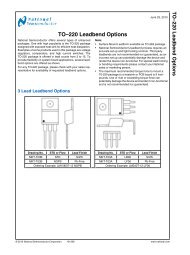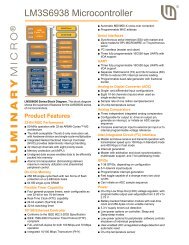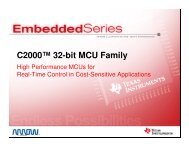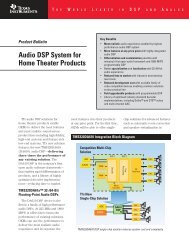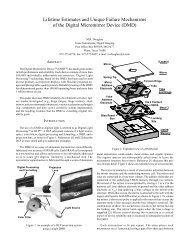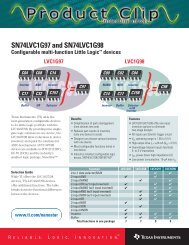IEEE 802.11g Document
IEEE 802.11g Document
IEEE 802.11g Document
Create successful ePaper yourself
Turn your PDF publications into a flip-book with our unique Google optimized e-Paper software.
coding gain. The second offshoot of<br />
802.11 was designated as 802.11a. It<br />
ventured into a different frequency band,<br />
the 5.2 GHz U-NII band, and was<br />
specified to achieve data rates up to<br />
54 Mbps. Unlike 802.11b, which is a<br />
single carrier system, 802.11a utilized a<br />
multi-carrier modulation technique known<br />
as orthogonal frequency division<br />
multiplexing (OFDM). By utilizing the<br />
5.2 GHz radio spectrum, 802.11a is not<br />
interoperable with either 802.11b, or the<br />
initial 802.11 WLAN standard. In March<br />
2000, the <strong>IEEE</strong> 802.11 Working Group<br />
formed a study group to explore the<br />
feasibility of establishing an extension to<br />
the 802.11b standard for higher data rates<br />
greater than 20 Mbps. In July 2000, this<br />
study group became a full task group,<br />
Task Group G (TGg), with a mission to<br />
define the next standard for higher rates in<br />
the 2.4 GHz band.<br />
For the past year and a half, TGg<br />
reviewed potential technical solutions<br />
for the new <strong>802.11g</strong> standard, with the<br />
field of candidates being narrowed to<br />
two final proposals in the May 2001<br />
meeting. At this meeting, TI’s proposal<br />
called PBCC-22, offering 22 Mbps<br />
operation in the 2.4 GHz band and<br />
seamless compatibility with existing Wi-<br />
Fi devices, was eliminated from<br />
consideration under the selection criteria<br />
being used by the group. However, the<br />
remaining proposal from Intersil<br />
Corporation, CCK-OFDM, proposed to<br />
make use of 802.11a-like OFDM<br />
modulation to attain higher rates, failed<br />
to achieve the necessary 75 percent<br />
approval in order to become the selected<br />
technology for the new standard. TI<br />
continued to support the standards<br />
process, contributing compromise<br />
<strong>IEEE</strong> <strong>802.11g</strong><br />
New Draft Standard Clarifies Future of Wireless LAN<br />
proposals to the TGg through the<br />
November 2001 meeting.<br />
As of the third day of the November<br />
2001 802.11 <strong>IEEE</strong> meeting, Intersil’s<br />
CCK-OFDM proposal appeared to be<br />
headed for uncertainty, having received<br />
only 55 percent acceptance of the<br />
required 75 percent to become the draft<br />
standard at the first-round vote. At this<br />
point, members considered the very real<br />
possibility of discontinuing the entire<br />
<strong>802.11g</strong> effort, versus finding a common<br />
ground and consensus-oriented solution<br />
that would be agreeable to the majority<br />
of the task group. On November 15, a<br />
compromise proposal that combined<br />
elements of both TI and Intersil’s<br />
original proposals, became the <strong>802.11g</strong><br />
draft standard with 76.3 percent of<br />
members voting in favor of it.<br />
What's in <strong>802.11g</strong>?<br />
The <strong>802.11g</strong> draft standard utilizes<br />
existing elements from the original<br />
CCK-ODFM and PBCC-22 proposals.<br />
Each of these proposals called for true<br />
802.11a OFDM operation in the 2.4 GHz<br />
band as an optional mode to the primary<br />
proposed modulation, either CCK-<br />
OFDM or PBCC-22. The <strong>802.11g</strong> draft<br />
standard makes OFDM the mandatory<br />
technology, offering 802.11a data rates<br />
in the 2.4 GHz band, requires mandatory<br />
implementation of 802.11b modes and<br />
offers optional modes of CCK-OFDM<br />
and PBCC-22. This balanced<br />
compromise offers a much clearer bridge<br />
between 802.11a and 802.11b, plus is a<br />
straightforward means to develop true<br />
multi-mode WLAN products.<br />
<strong>802.11g</strong> achieves the high 54 Mbps data<br />
rates (Table 1, Appendix, page 5) of<br />
802.11a in the 2.4 GHz band, thereby<br />
2 © 2002 Texas Instruments Incorporated



